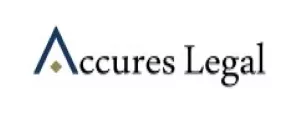Open innovation denotes a strategic approach where businesses invite not just internal but also external participation in idea generation and problem-solving. It is a process that seeks to harness shared knowledge and insights from various sources, both inside and outside the organization, to spark innovation and generate novel solutions.
This approach manifests in different forms, including long-term partnerships such as Delphi and Mobileye's collaboration on autonomous driving systems, co-creation competitions like the BMW startup challenge, and crowdsourcing platforms exemplified by 'My Starbucks Idea'. Contrary to the guarded, siloed approach typical of conventional business R&D, open innovation fosters a more inclusive, distributed, and decentralized style of innovation.
This concept, acknowledges that useful knowledge is globally dispersed and no single entity, no matter how skilled or sizeable, can innovate effectively in isolation. Nevertheless, a vital component of open innovation is an overarching architecture that knits these varied activities together. The business model, which is itself subject to innovation, decides what gets internalized or externalized within the firm.
Open innovation, now a subject of hundreds of academic papers, offers businesses a more profitable innovation pathway by cutting costs, hastening market entry, enhancing market differentiation, and spawning new revenue streams. It has become an integral part of many global companies, with numerous roles such as 'Manager of Open Innovation' now commonplace. An array of software companies, intermediaries, and consultants now offer products and services in open innovation, indicating that this concept has indeed passed the market test.
Defined by Henry Chesbrough in 2003, open innovation encourages purposeful knowledge inflows and outflows to expedite internal innovation and widen external innovation application markets. Upon its adoption, organizational boundaries become porous, enabling the amalgamation of company resources with external collaborators.
Open innovation champions a significant influx of external knowledge into the organization, translating into cooperative projects and the acquisition of external technologies. Innovations birthed within the company may also be sold to other organizations as technology or industrial property, sometimes because they do not fit the company's business model or the company lacks the capacity or experience to develop the invention.
The concept of open innovation has historical roots in collaboration and co-creation practices dating back to when humans first engaged in trade or the cottage industry began borrowing practices from other cultures and regions. The benefits of open innovation are manifold and encompass aspects like new product and service creation, revitalization of existing offerings, network and community building, employee engagement, new revenue streams, and risk reduction in innovation. Therefore, open innovation proves particularly beneficial for smaller organizations that might lack resources to expedite projects, offering them a way to curtail costs, accelerate timescales, and distribute risk in partnership with larger entities.
The content of this article is intended to provide a general guide to the subject matter. Specialist advice should be sought about your specific circumstances.



